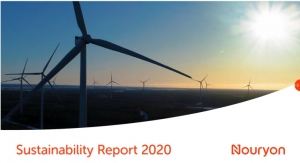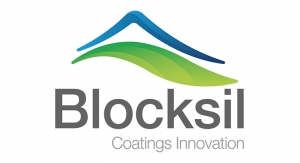12.15.16
The Roof Coatings Manufacturers Association (RCMA) and NSF International have created the first product category rule (PCR) in North America for roof coating materials. PCRs enable product environmental information to be more transparent and useful to the marketplace. Products covered in this PCR include fluid-applied and adhered coatings used for roof maintenance or roof repair, or as a component of a roof covering system or roof assembly.
Based on international environmental management guidelines (ISO 14025), a PCR defines how to conduct a life cycle assessment for a particular product group and what to include in the resulting report. A life-cycle assessment measures inputs, outputs and environmental impacts of a product across its lifespan. The environmental product declaration (EPD) is the third-party-verified report that explains the data generated from a life cycle assessment. What is included in the EPD is also defined by the PCR.
The NSF International National Center for Sustainability Standards (NCSS) utilized an open consultative process to develop the PCR with participation from an expert panel of RCMA members, suppliers, regulatory agencies, environmental organizations and end users. RCMA is the leading industry voice promoting the benefits of roof coatings and representing manufacturers of asphaltic and solar reflective roof coatings as well as suppliers to the roof coatings industry.
“This product category rule developed by RCMA and NSF International provides our industry a much needed guideline for calculating and reporting the environmental attributes of roof coatings,” said Jim Kirby, Executive Director of RCMA. “The subsequent life cycle analyses developed by our members using the PCR can provide a basis for improvement to enable reductions in environmental impacts over time. We look forward to the positive impact this will have on the industry and those seeking more sustainable building products.”
“As a manufacturer participating in the PCR development, we support our industry in providing more transparent and science-based information to our customers,” said Douglas P. Mazeffa, Environmental Project Manager at Sherwin Williams. “Our company is committed to helping customers make informed, environmentally-based purchasing decisions.”
“Industries benefit from NSF International’s open and transparent standards development process that was used to develop the first PCR in North America for roof coating materials,” said Jessica Slomka, Manager of the NSF International National Center for Sustainability Standards. “By engaging RCMA members and other stakeholders, we help ensure the most significant environmental impacts in the life cycle of a product are represented. The result is a defined set of rules that enable comparative data to be gathered and reported in a standardized fashion. This is crucial in helping builder’s source products that meet their environmental goals.”
Verified environmental product declarations (EPDs) as defined by this PCR may help building projects qualify for points through the LEED v4 Material and Resource credits and comply with the International Green Construction Code (IgCC)
Based on international environmental management guidelines (ISO 14025), a PCR defines how to conduct a life cycle assessment for a particular product group and what to include in the resulting report. A life-cycle assessment measures inputs, outputs and environmental impacts of a product across its lifespan. The environmental product declaration (EPD) is the third-party-verified report that explains the data generated from a life cycle assessment. What is included in the EPD is also defined by the PCR.
The NSF International National Center for Sustainability Standards (NCSS) utilized an open consultative process to develop the PCR with participation from an expert panel of RCMA members, suppliers, regulatory agencies, environmental organizations and end users. RCMA is the leading industry voice promoting the benefits of roof coatings and representing manufacturers of asphaltic and solar reflective roof coatings as well as suppliers to the roof coatings industry.
“This product category rule developed by RCMA and NSF International provides our industry a much needed guideline for calculating and reporting the environmental attributes of roof coatings,” said Jim Kirby, Executive Director of RCMA. “The subsequent life cycle analyses developed by our members using the PCR can provide a basis for improvement to enable reductions in environmental impacts over time. We look forward to the positive impact this will have on the industry and those seeking more sustainable building products.”
“As a manufacturer participating in the PCR development, we support our industry in providing more transparent and science-based information to our customers,” said Douglas P. Mazeffa, Environmental Project Manager at Sherwin Williams. “Our company is committed to helping customers make informed, environmentally-based purchasing decisions.”
“Industries benefit from NSF International’s open and transparent standards development process that was used to develop the first PCR in North America for roof coating materials,” said Jessica Slomka, Manager of the NSF International National Center for Sustainability Standards. “By engaging RCMA members and other stakeholders, we help ensure the most significant environmental impacts in the life cycle of a product are represented. The result is a defined set of rules that enable comparative data to be gathered and reported in a standardized fashion. This is crucial in helping builder’s source products that meet their environmental goals.”
Verified environmental product declarations (EPDs) as defined by this PCR may help building projects qualify for points through the LEED v4 Material and Resource credits and comply with the International Green Construction Code (IgCC)


























